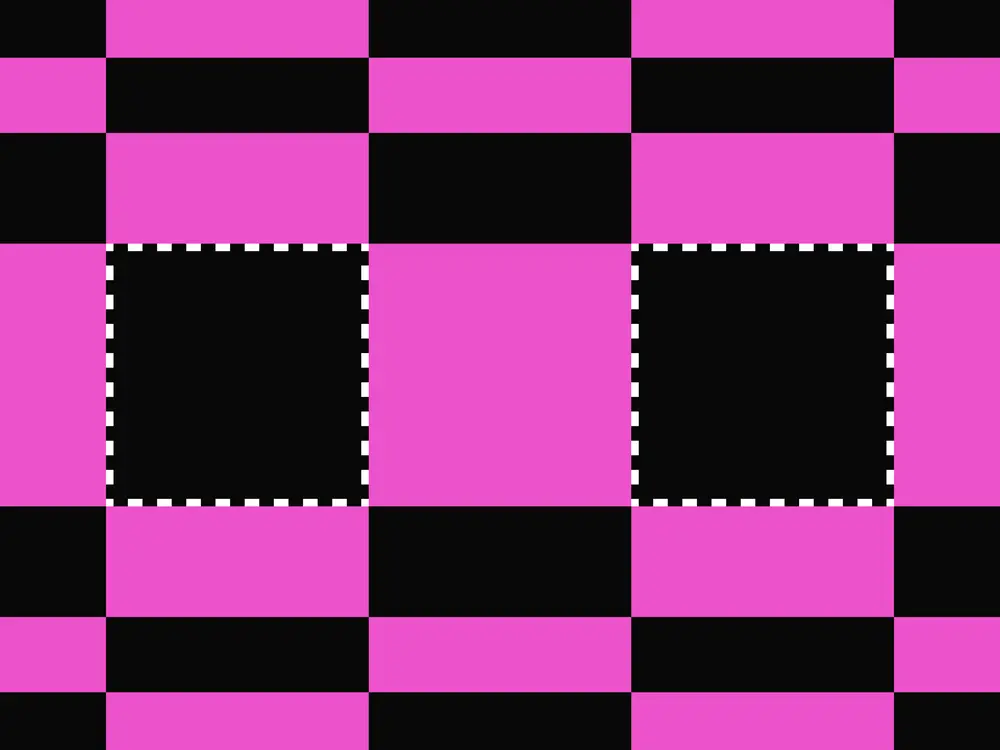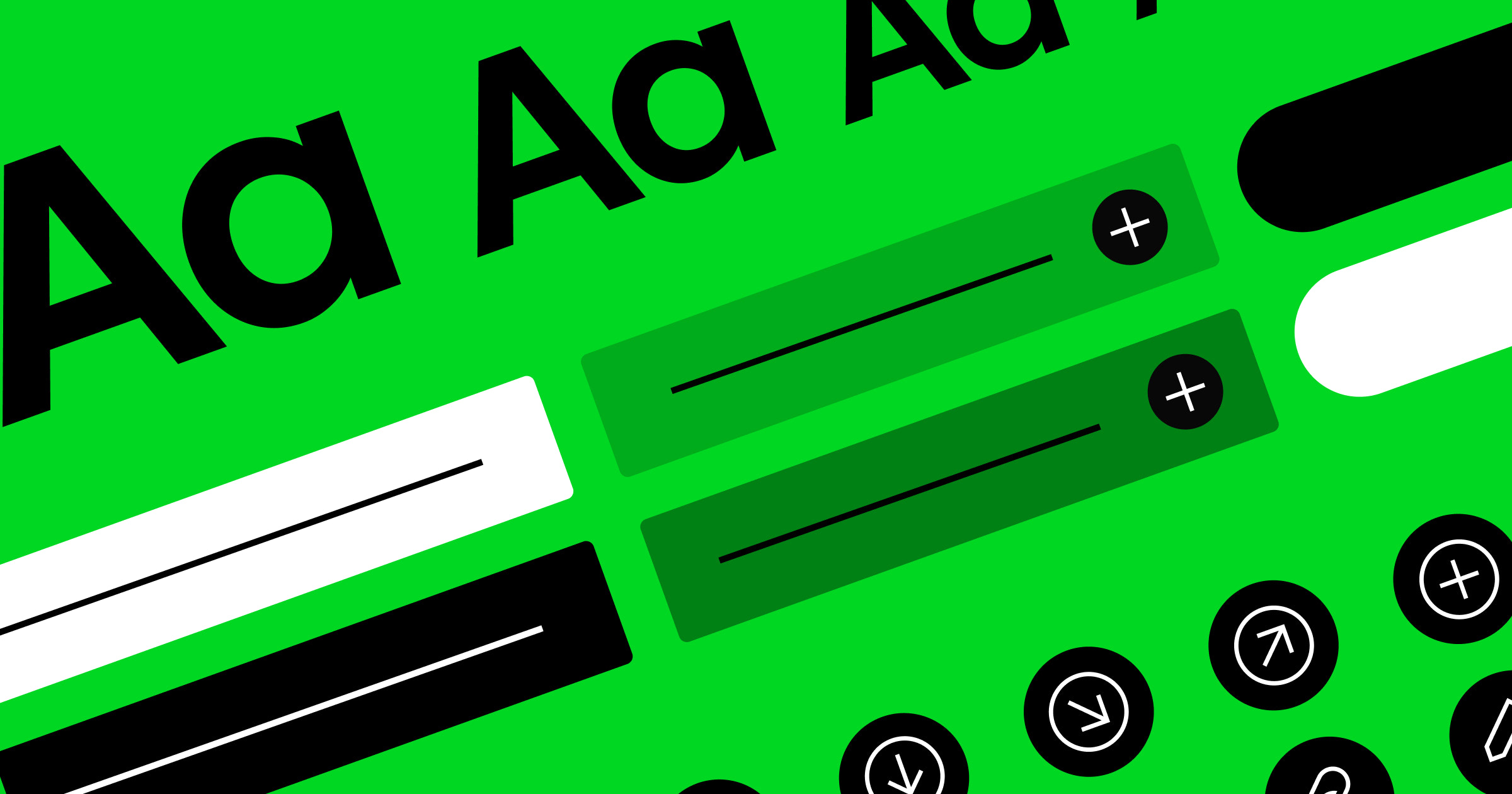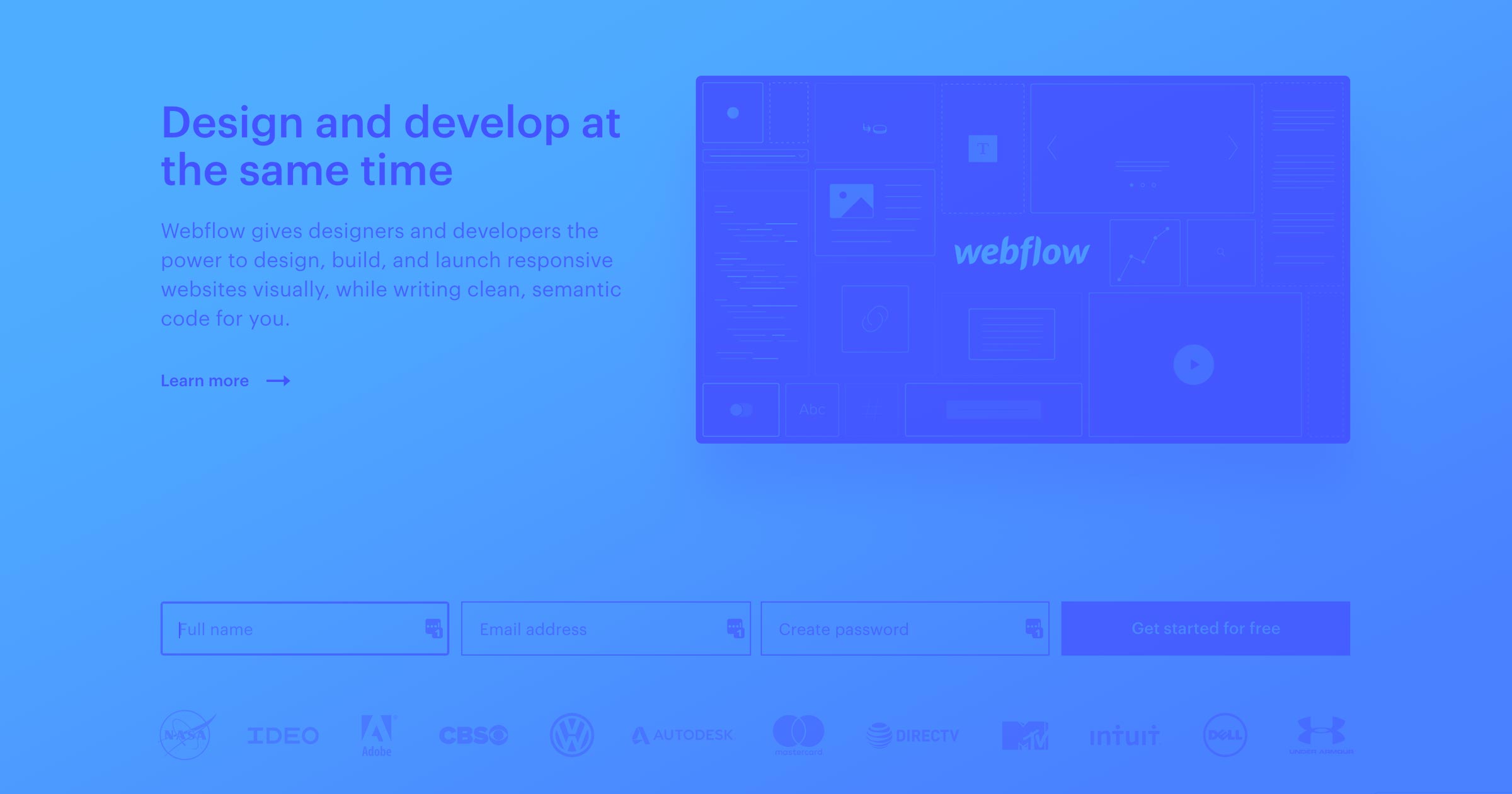Design systems are the secret weapon smart marketing teams deploy to create consistent, scalable brand experiences while minimizing production time and endless approval bottlenecks that kill campaign momentum.
In today's fast-paced digital landscape, marketing teams need efficient ways to maintain brand consistency while accelerating output. Enter design systems — the structured framework changing how marketing and design teams collaborate. Whether you're creating landing pages, social media assets, or email campaigns, a well-implemented design system can transform your marketing operations from chaotic to cohesive.
This comprehensive blog will walk you through everything you need to know about design systems for marketing: what they are, their essential components, and a step-by-step approach to building one. We'll explore the specific advantages design systems offer marketing teams, from streamlining workflows to ensuring brand consistency across all touchpoints. Finally, we'll share insights from our experience at Refokus, where we've helped marketing teams implement powerful design systems that drive results.
Let's start by understanding what exactly a design system is and why it's becoming indispensable for modern marketing teams.
What is a design system?
A design system is the single source of truth containing elements that help teams design, conceptualize, and develop products and marketing websites that deliver satisfying and consistent experiences to users.
These elements include (but are not limited to):
- Brand guidelines
- Design principles
- Typography
- Color
- Layout
- Reusable components
- Webflow implementation guidelines
- Design implementation guidelines
These elements help teams tie the product or website together into a solution meant to delight and help their target audience.
All in all, a design system does the following:
- Provides a shared language for designers, developers, AND marketers.
- Allows designers, developers, AND marketers to reuse images, buttons, code snippets, and styles on the fly.
- Encourages a modular approach to product and website building
We're not the first to make this analogy, but a good way to understand how design systems work is to compare them to LEGO building blocks. Like LEGO blocks, a design system provides you with the components to build a greater whole in a way that everyone understands intuitively how it all fits together.
Key components of an effective design system
While design systems can be customized to suit your business’ specific needs, the most powerful ones typically include these essential elements:
- Design principles: The foundational values and guidelines that inform all design decisions, reflecting your brand's unique identity and vision. These principles serve as the North Star for designers and marketers alike.
- Design pattern library: A comprehensive collection of approved, reusable design patterns that solve common visual problems. These patterns — combinations of design elements working together — ensure consistency across all touchpoints while reducing decision fatigue.
- Component library: The practical building blocks of your digital presence, including buttons, forms, navigation elements, and other UI components. This ready-to-use toolkit allows marketing teams to assemble on-brand assets without reinventing the wheel each time.
- Design tokens: The fundamental design variables (colors, typography, spacing, etc.) that can be easily implemented across different platforms and technologies. Tokens translate your brand's visual identity into code-friendly parameters.
- Process documentation: Clear workflows and methodologies that guide teams through design implementation, ensuring everyone understands how to properly apply the system to new projects.
- Accessibility standards: Detailed guidelines ensuring all digital experiences remain accessible to users of all abilities, compliant with the Web Content Accessibility Guidelines, and inclusive by design.
When seamlessly integrated, these features create an ecosystem that empowers marketing teams to create consistent, high-quality assets while reducing production time.
How to build a design system step-by-step
Every effective design system requires thoughtful implementation. Here's a streamlined approach to creating one that will serve your organization's needs:
- Secure stakeholder buy-in: Form a cross-functional team including product managers, marketers, and executives to ensure organization-wide adoption and diverse perspectives.
- Audit existing design elements: Catalog all UI components and visual elements currently in use, identifying inconsistencies that need standardization.
- Define your design language: Establish core principles that reflect how you want customers to feel when interacting with your brand, along with guidelines for color, typography, and imagery.
- Create a pattern library: Develop reusable UI components built on design tokens (foundational visual elements like colors and spacing) that bridge design intent with implementation.
- Document usage guidelines: Provide clear instructions on when and how to use design elements, including contribution and maintenance procedures.
- Include practical examples: Offer real-world applications that demonstrate the design system in action, giving teams visual references to follow.
- Maintain and evolve: Schedule regular audits, gather feedback, and implement updates to keep your design system aligned with evolving brand needs and industry standards.
A well-executed design system isn't static — it’s an ecosystem that grows with your business while maintaining the consistency that makes your brand recognizable.
Benefits of design systems for marketing teams
While marketers mostly deal with KPIs, brand messaging, and marketing touchpoints, that doesn’t mean they’re not capable of thinking visually. Marketers (or some of them) may have limited knowledge of UI and UX design, but put a good design system in their hands and they’ll be able to build websites like a professional designer in no time.
A design system — if implemented well — will give your return on investment a big boost, especially when put in the hands of multiple marketing teams (as is possible in an enterprise).
Let’s take a deep dive into how design systems can benefit marketing teams.
1. Improved collaboration
Marketers are concerned about brand messaging, KPIs, and marketing strategy, but it can be useful to give them the tools to present their ideas in visual form. Once a design system onboarding is complete, the marketing team can create more detailed and conversion-focused web pages, eliminating a lot of unnecessary back-and-forth that tends to waste everyone’s time.
By implementing a design system that allows your marketing team to create simple websites with ease, designers and developers can focus on creating customs and new components that will add more value than repetitive work ever could.
2. Consistent and better user experiences
Giving marketers a platform to communicate their ideas visually in service to the company’s core goals doesn’t just improve collaboration — it leads to better user experiences.
When you have a centralized system that contains pre-approved components and assets, marketers can create web pages and user interfaces without compromising visual consistency, resulting in solutions that create better experiences.
3. Better efficiency and reduced expenses
A design system contains reusable assets and components that marketers, designers, and developers can use to create web pages on the fly. No one has to create anything from scratch because everything they need is within the design system.
Pretty convenient, right? This means no more resources wasted on duplicate assets. And because everything is consolidated in the system, the company is less likely to incur “design debt,” allowing everyone to complete their respective tasks more efficiently.
Implementing a design system and maintaining it will require resources, sure, but when you have a single source of truth that creates efficiency across the board, the positives far outweigh the negatives.
Even if your internal team lacks the know-how to build websites (or is too busy to learn about it), you can always get help from agencies like Refokus.
4. Ability to create yourself without depending on anyone
You may have the best product, but if you can’t launch your offering before your competitor does, you’re going to get beat almost every time. Remember, in today’s fast-paced, competitive environment, you will lose out on opportunities, customers, and market share if you don’t move fast.
The point? Your marketing team can’t afford to wait for your design team to step in if a similar product is already gaining traction in the market. Why wait around when marketers can design their landing pages themselves?
With a design system in place, your marketing team can capitalize on current trends and get ahead of the pack by launching marketing campaigns without waiting for the design team.



















Evolving design systems
In our ebook, learn why experts are investing in scalable design systems and how they are thinking about the future of design systems.
How Refokus creates design systems for marketing teams

At Refokus, we use a tried-and-true methodology to create design systems that empower marketing teams. We adopted this process to make sure that what we're building is impactful, sustainable, and relevant to our clients' needs. We also aim to build a design system that marketing teams can easily use.
We split our process into five stages: discovery, strategy, design, Webflow, and workshops.
1. Discovery
We start things off by learning as much as we can about the client’s business — what are their business goals? What are their target audience’s needs? What are their current strategies?
On top of conducting interviews with the client’s marketing team, we also review the client's current websites to see what can be improved and identify potential issues and gaps that may hurt business outcomes.
2. Strategy
After we have collected and reviewed all the necessary information, we enter the strategy phase. Here we create the visual assets and documentation that will help everyone understand what's going to be built and how. These include:
Mood board
A design system project offers a great opportunity to improve the client’s design and take it to the next level. But to do that in a way that maintains brand consistency, we create a baseline that will define the brand’s visual language — a mood board.
By taking all the information we've gathered during the discovery session, we can create a mood board that accurately represents and conveys our client's brand personality.
To come up with the best visual ideas, we conduct a brainstorming session with the client to curate the best ideas and categorize them in a way that’s easy to navigate and understand.
Wireframes
We then create wireframes and share them with the client. A wireframe is a sketch of what the design system will look like. This stage is important because it sets the client's expectations and helps establish a consensus on how to move forward.
This collaboration allows us to create a prototype of the design system and iterate on layout and structural changes before investing in design and development. Next, we work with the client to conceptualize the layout and structure of the design system.
Webflow implementation guidelines
Once we've agreed on the design system's overall structure, we define how everything is going to be built in Webflow. We do this by defining class nomenclatures, organizing atoms and components, and setting up templates and examples. We also provide thorough documentation to streamline implementation.
3. Design
The design phase is where we define the front-end look and feel of the design system, creating the components’ user interface and giving each detail a final polish. We do this by creating a style guide in Figma and sharing it with our client’s team to foster collaboration.
With a style guide in place, we can keep growing and refining the design system in Figma before jumping into Webflow. By this time, not only do we have reusable components for building new websites in Figma, but we’re also given the means to create new components in the future.
UI design
We create the visual design for all pages and components, adding iconography, illustrations, and animated graphics to provide users with a great overall user experience.
Handoff for development
By this time, all technical specifications are clear, the detailed design is fully approved, and all outstanding questions are resolved. Once these conditions are met, the development team can start with Webflow implementation.
4. Webflow
We believe in building quality products with solid foundations, which is why we care deeply about standards and processes. While we’re always open to trying out the newest shiny tool, Webflow has been the only constant in our tech stack repertoire since 2013! In fact, every marketing website we’ve made over the last seven years has been built in Webflow.
Webflow is the perfect tool for building design systems that help marketing teams build faster without compromising or diluting their brand’s visual identity or core values.
Webflow Components
Webflow Components focus on reusability, optimizing your workflow, and additional control in design systems. With Components, we create customizable blocks from elements and child elements to maintain a consistent, efficient, and scalable design workflow. We reuse those blocks across websites and modify them in a single place to avoid individually revising each recurring layout.
We build design systems to help marketing teams build websites faster, as well as to help them execute their marketing ideas on the web pages they’re creating. We love using Components thanks to their key characteristics:
- They are more intuitive, accessible, and streamlined for site contributors, like marketers and content editors, with the ability to edit content directly on the canvas.
- With visibility properties, they are more flexible with the ability to customize and reuse Components to fit different design scenarios across ourprojects, including showing and hiding elements in instances to configure any layout variation.
- They are reusable across different CMS Collection pages to preserve consistent designs.
We build Components to allow teams to build together while minimizing design inconsistencies as they scale their sites. Learn more about how to create and edit Components.
Templates
Having a design system is great, but those who don't have a design background can feel stuck the moment they face the blank page. To give them a good starting point, we review the most used components and combinations and then create a set of template pages out of them. Once these templates are up in the design system, marketing teams can create simple landing pages faster and with ease.
SEO and page speed
By defining the symbols in advance, we allow ourselves more room to optimize and refine their performance. But we also do so in ways that fit SEO best practices to make it easy for our clients to build web pages that will rank high in search engine results.
5. Workshops
A robust design system can boost your ROI, but that alone is not enough to turn a client's organization around. We don’t simply hand over a design system and let the client run with it without proper training and guidance — we conduct Webflow Workshops instead.
On top of educating our clients on how to use their custom-made design system, we also help them reestablish their design philosophy so everyone can tailor their processes accordingly. These workshops are instrumental in helping marketing teams get the most out of Webflow’s component library. Moreover, these sessions provide them with the knowledge needed to maximize the limitless possibilities offered by digital products like Webflow and Refokus.
What’s next?
To truly empower your marketing team, provide them with the functionality and usability of a design system. Don’t just leave them to draw on whiteboards all the time. Because believe me, if you give them a design system that is tailored to their needs and provide them with the training to help them maximize its benefits, they will accomplish great things. And that will only help elevate your brand and smash your ROI goals.

Build websites that get results.
Build visually, publish instantly, and scale safely and quickly — without writing a line of code. All with Webflow's website experience platform.






























